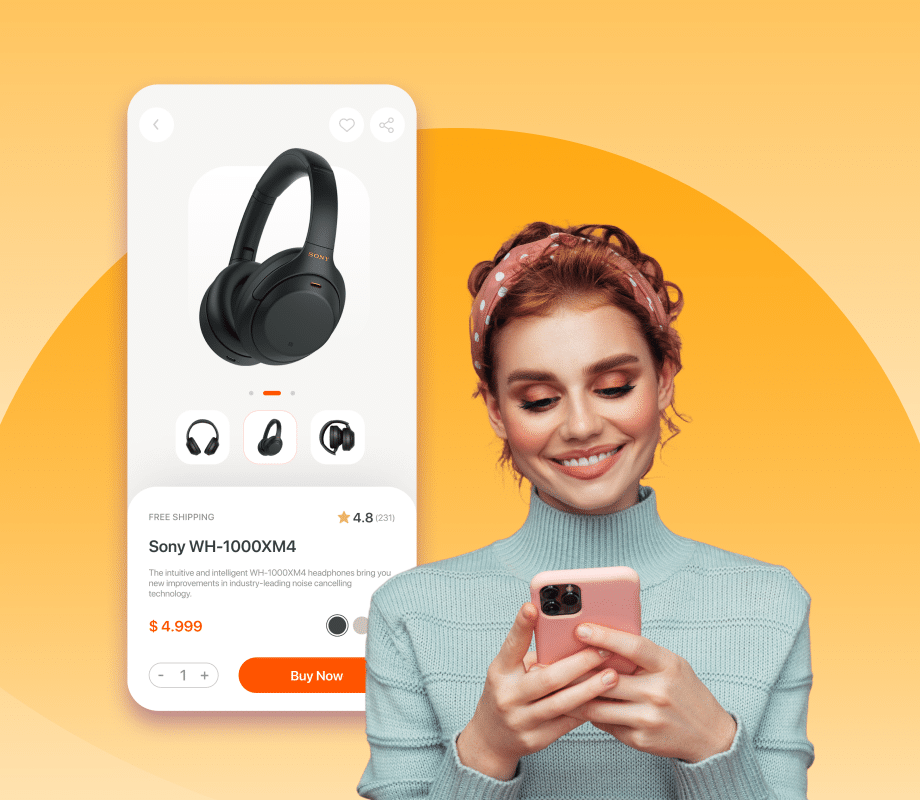Creating content can be a daunting task, even for digital marketing organizations. The sheer number of variations you need to curate in order to target specific segments of customers in a data-driven manner makes the whole exercise quite cumbersome. Well, help is at hand – we are talking about Experience Designer to help you kickstart personalization of your content.
If you’re familiar with our personalization engine, you may be aware of the Experience Browser (XB), which is pioneering transparency in AI decisioning. Working with XB, the Experience Designer leverages Xen AI engine in order to identify the appropriate targets automatically and subsequently uses your existing content to create relevant campaigns.
Without the hassle of carrying out full tests, marketers can iterate and therefore distribute real data to the ones who are actually delivering the experience. This acts like a bridge between the marketing and commerce teams. Let’s dig a bit deeper into how this works.
Auto-discovery of Behavioral Segments
Segment creation is the most important aspect when it comes to targeting customers and creating personalized content. Since digital commerce is quite complex and volatile, extracting actionable and timely insights from data becomes a challenge. Let alone the time spent on it, even your entire analytics budget could be spent, and you would still not be able to fulfill your objectives. Auto-discovery of behavioral segments is a new feature that we have added to eliminate manual effort in the process of segment creation.
Through this feature of auto-discovery, Xen AI-driven machine learning algorithms replace costly and inefficient manual analytics to find new and more interesting behavioral segments, while also providing a web-based visual tool for reviewing and acting upon the insights generated.
Using this feature, you can easily discover segments based on any kind of filter, be it brand, category, or product. Furthermore, once identified, it becomes all the more easier to target said segments with highly personalized cross-sell campaigns and offers. For example, you can discover customers that convert but with low spends.
So, how does this auto-discovery work?
Using metrics like conversion rate, average order value, revenue per visitor, and the like, auto-discovery can cluster audiences together. After that, such clusters are filtered. Clusters are excluded if they have less than 10 percent of the overall paying audience. Also excluded are the clusters that have less than 5 percent (minor) positive or negative metrics variation when compared with the average audience metrics.
Assuming average conversion metrics, the remaining clusters are used to calculate the potential revenue as additional revenue.
Benefits of the Experience Designer
If you have used XB, you will find the Experience Designer to be quite familiar. It is a similar web-based tool that sits atop the web page on your browser, like an overlay, or a HUD, if you can relate to FPS games.
The Experience Designer can help marketers create, execute, and edit content-based placements and campaigns directly from the live web page, without needing to navigate to another tool or requiring the intervention of the IT team.
For marketers who wish to test, modify, or launch campaigns on the go, this tool can be a boon. Apart from giving the freedom to create campaigns fast, this tool also helps marketers realize the complete potency of the content in their libraries.
Once the segments are defined through auto-discovery, segment builder, or via the segment import tool for externally created ones, you would need to define the campaign/s for these audiences.
Now that you know what sort of fine-tuning you can achieve with audiences, you will be pleased to learn that the same kind of intuitiveness is also offered when designing a campaign. You can drill down to narrower targeting via metrics that were earlier just an unusable tag. Campaign design is rather effortless, with filters that allow for more specific control on the segment including subsets of monthly new or returning visitors, abandoned carts, infrequent loyalty members, etc.
After that, you would need to choose the content that is applicable from your existing library. This is then used by the Xen AI engine to continuously work towards optimizing for conversion or click-through goals.
Last but not the least, you choose where the placement would be on the website. All it takes are a few clicks – no coding required. There is an approval process that needs to be followed though, so your experiments are not pushed to production by an erring click.
And that’s all there is to it!
The Experience Designer helps bring in commerce data to understand conversions from content, and that is where digital marketers benefit the most. Why choose from among content and commerce when you can have the cake and eat it too?
Learn more on how Algonomy can help you strengthen your content personalization strategy.
 in Sweden from 7 - 8 October 2025. Pre-book a meeting to connect with our
product experts.
in Sweden from 7 - 8 October 2025. Pre-book a meeting to connect with our
product experts.










